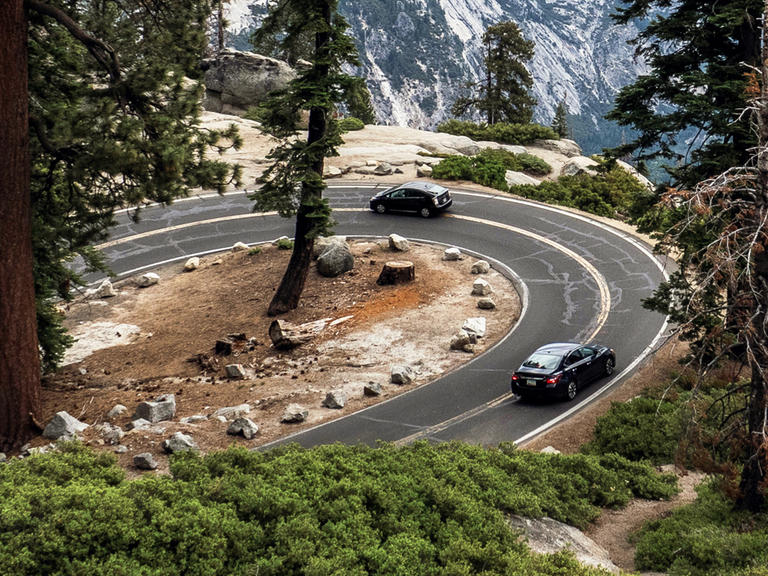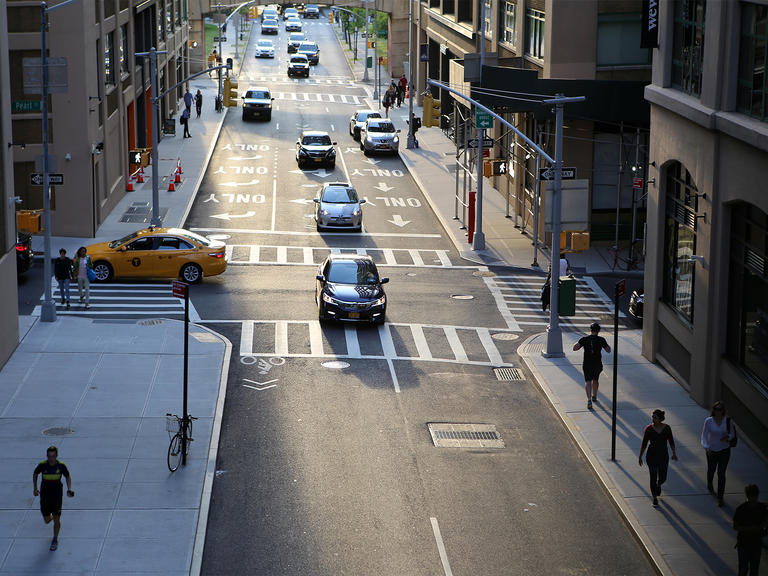What’s the difference between autonomous and automated driving?

These two technologies are reshaping the world of automotive, but do you really know which is which?
In the world of automotive technology, two terms often cause some confusion: "automated driving" and "autonomous driving'". While they may sound similar, both represent different levels of technology and have specific implications for the future of mobility.
To help make things a little clearer, this article explores all the similarities and differences between automated and autonomous driving that are enabling the next generation of sustainable and efficient mobility solutions.

A wide spectrum
Automated and autonomous driving could be described as points on a spectrum rather than standalone categories. Think levels of advancement, not separate developments. Let us explain.
Automated vehicles use advanced technology and location data to perform certain driving functions such as steering, braking, accelerating and parking without human intervention.
In other words, data is crucial. By using a combination of radar, lidar, camera sensors and advanced algorithms, vehicles can accurately interpret their environment and execute specific actions. This reliance on data not only increases efficiency but also contributes to safety as it reduces the potential for human error.
Automated driving systems are designed to increase safety, reduce congestion, and improve fuel efficiency.
But this doesn't apply to autonomous driving technology. Unlike automated vehicles, autonomous vehicles are self-reliant, as the name already suggests. They leverage advanced artificial intelligence algorithms to make decisions, plan routes and adapt to varying traffic conditions.
The ability to operate independently in any situation, from navigating complex city environments to cruising on high-speed highways, makes autonomous vehicles a lot more advanced than automated ones.

A level playing field
Let's back up a little. As we already mentioned, automated and autonomous driving are just two different points on a spectrum. This "spectrum" refers to the six levels of automation, which range from 0 (no automation) to 5 (full automation), as defined by The Society of Automotive Engineers (SAE). The journey from automated to fully autonomous driving is gradual, with each level of automation bringing us closer to the ultimate goal of self-driving, fully autonomous vehicles.
At Level 5, autonomous vehicles will have the capability to sense their environment and navigate without any human input. But we are not quite there yet. Most commercially available automated vehicles today fall into Levels 1 and 2 (with Level 3 debuting this year), where the vehicle controls some functions but requires the driver's engagement.
In short, autonomous driving capabilities have the potential to revolutionize how we travel. By eliminating human error, they can significantly reduce road accidents and fatalities. They also promise to transform the experience of those who might be unable to drive, such as older adults or people with disabilities.
Autonomous vehicles could transform the way we live, work, and play, creating safer and more efficient roads.

Are we there yet?
As we progress toward fully autonomous driving, the automotive industry is continuing to prioritize safety and efficiency. By leveraging data and prioritizing sustainability, manufacturers can reduce the environmental impact of vehicles and contribute to smarter, greener cities. And with technology advancing faster than ever, the question is not if, but when.
Have your say
Sign up for our newsletter
Why sign up:
- Latest offers and discounts
- Tailored content delivered weekly
- Exclusive events
- One click to unsubscribe


